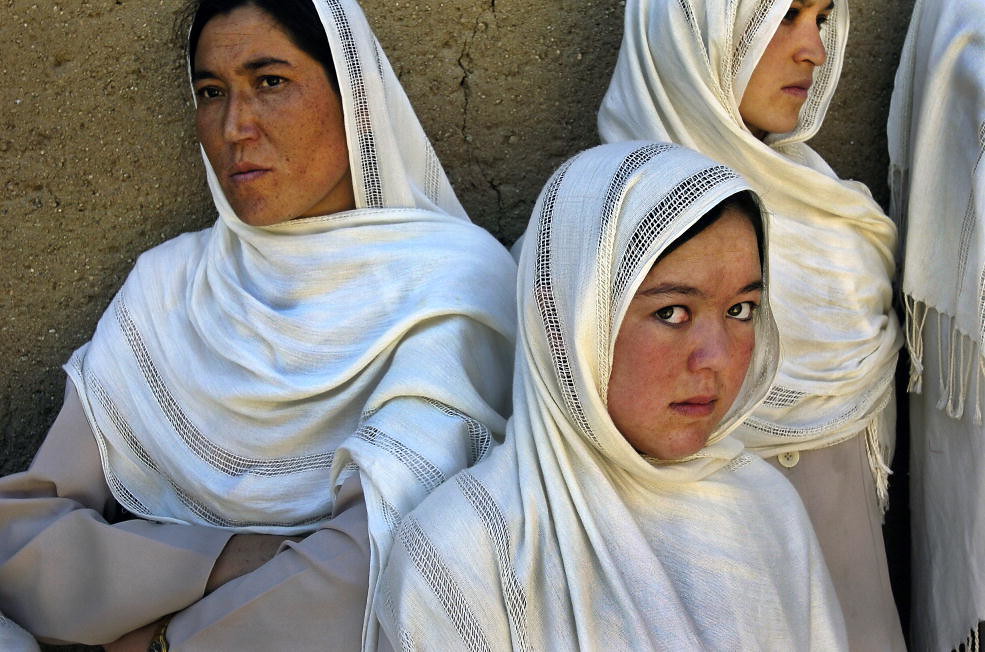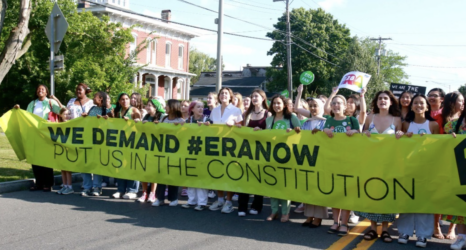As this crisis of violence against Afghan women at the hands of the Taliban continues, we must support the leadership of Afghanistan’s women on their own terms.

As a gender justice activist, and the daughter of a strong and fierce Iranian immigrant who sacrificed greatly for the rights of her daughters, I am horrified at the injustice and harm women, girls and marginalized communities are facing in Afghanistan.
The Taliban is throwing women out of their jobs and forcing them to stay home in many areas. Women reported widespread sexual violence this summer. Gender justice activists in Afghanistan are in grief that the rights women sacrificed so much to gain were thrown out the window in a matter of hours.
Women and girls in Afghanistan have far too often been used as pawns for others’ self-interest. Their rights violations have been weaponized to justify wars. Aid has been delivered on behalf of women and girls. They have been boxes to be checked off and their rights used as tools of trade between men in power.
This must end now. And besides, most of the foreign policymakers who invoked women’s rights when convenient have left the country. Nearly all foreign NGOs have gone as well.
We are hearing that the biggest needs right now are basic supplies like food, health supplies and shelter for internally displaced people. Women need technology, like smart phones, that can allow them to apply for passports online and transportation to where services are available. Meanwhile women human rights defenders’ lives are in grave danger, especially if they had any relationship with the U.S. government or U.S. agencies.
Feminist groups within Afghanistan and in the region, led by local courageous leaders, have already been working to meet these imperative needs. They are providing food, medical care and safe spaces for women and children. Reproductive health and mobile clinics are still operating under emergency protocols so they can still provide emergency care to women and girls despite the threat of the Taliban.
As this crisis continues and spools into weeks, months and possibly years, we must fund the local feminist leaders and grassroots organizations in Afghanistan—we need to support the leadership of Afghanistan’s women on their own terms. They are in grave danger for their very existence, let alone the work they engage in; they need money and advocacy now.
Unfortunately, this is rarely the way aid works. The vast majority of humanitarian aid is top-down and hardly ever put in the hands of impacted communities—94 percent of relief aid flows to international NGOs and only 0.4 percent goes to local and national groups.
This model is broken. Afghanistan’s activists don’t need yet another group acting on their behalf.
But there is another way. Feminist funders have been supporting local Afghan feminist groups for decades with long-term flexible funds toward urgent community needs and long-term rebuilding. We need to vastly increase this feminist funding that goes directly to local grassroots groups to use how they wish. We know this feminist funding model works, even under repressive regimes, and even in Afghanistan.
Global Fund for Women, a feminist funder for which I am on the board of directors, has funded local groups working in Afghanistan for over 20 years. They are scaling up crisis funding, including partnering with other feminist funders like Urgent Action Fund Asia and Pacific.
Funding women’s rights in Afghanistan will become increasingly hard, but those with deep partnerships and a long-term mindset have vowed to continue.
Meanwhile, the work on the ground carries on. We are hearing that many Afghan women’s rights activists do not want to, or plan to, leave Afghanistan. Their work is needed now more than ever.
Afghanistan: Women protest against the Taliban in Kabul: Today’s slogan: “Freedom, liberty is our ultimate right”, “Women right is human rights.” pic.twitter.com/ezENocRaP1
— Saleha Soadat (@SalehaSoadat) September 6, 2021
Dr. Sakena Yacoobi, who founded the Afghan Institute of Learning which has educated thousands of girls under the Taliban, recently explained:
“While we are afraid, we are not defeated. … Ideas do not disappear so easily. One cannot kill whispers on the wind. The Taliban cannot crush a dream. We will prevail, even if it takes longer than we wanted it to.”
Here are some calls from feminist and local groups in the region:
Musawah is asking for neighboring countries to keep borders open and ensure safe passage to fleeing refugees and for any effort to resolve this crisis to involve Afghan women and the Indigenous women human rights movement as central partners. One Afghanistan is organizing the Afghan diaspora to promote peace, wellness, safety and security for the people of Afghanistan by organizing protests, lobbying, disseminating petitions and coordinating donations for newly arrived refugees.
Afghan women, girls and marginalized groups, are in this for the long haul. We need to be beside them with both urgent and long-term support to local and regional gender justice organizations to shift power, resources and autonomy to the activists and local communities leading the way.
Sahar Azimi, news anchor and international multimedia broadcaster for Voice of America, explains that women and girls in Afghanistan fought in the last 20 years to be outspoken, only now for the world to suddenly ask them to sacrifice all that they have learned.
“Once you teach a bird to fly, you cannot imprison them. Our women are not meant to be caged, and we must support them in finding freedom from the Taliban’s chains once again.” Afghanistan is theirs.
Up next:





